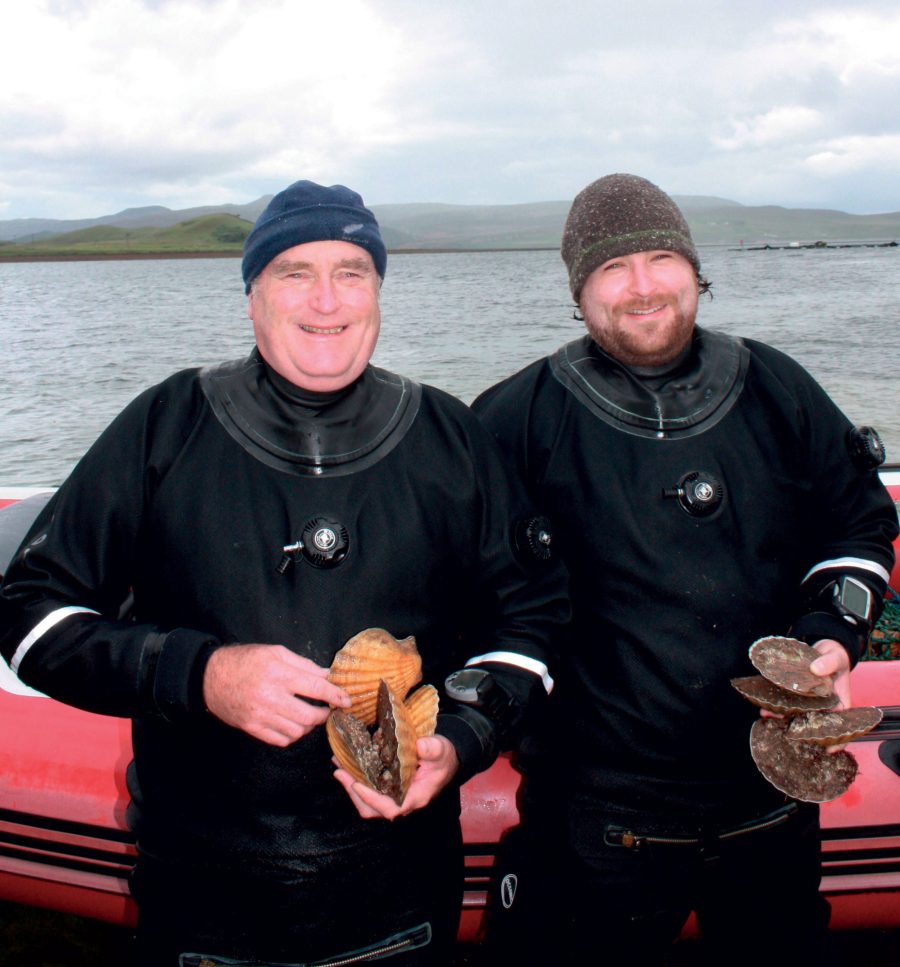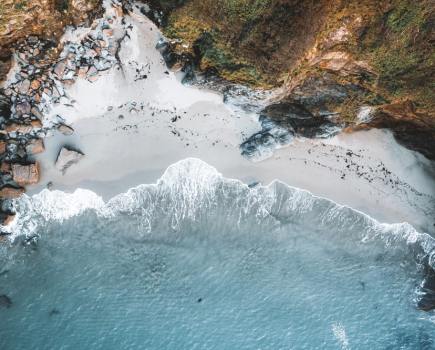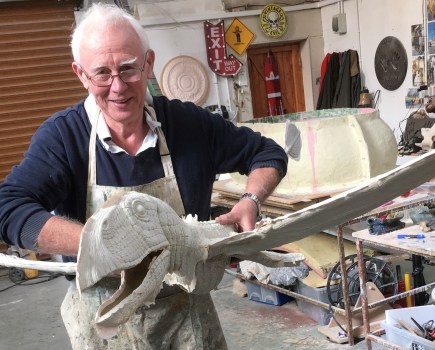Scallop-diver DAVID OAKES on running a sustainable family fishing business on the Isle of Skye. Interview Jessica Johnson
My son Ben (pictured, right) joined our family business last year after studying for a degree in Sustainable Management. I remember when he was a wee boy, he’d hang on my neck while I swam lengths of the swimming pool underwater, hold his breath, and then shout ‘again, again!’ as he popped up the other end. To have him working alongside me in the boat is something I always hoped for.
Our journey to work is slightly more than a stone’s throw from our house on the shores of Loch Sligachan. We specialise in twice-dived, shallow-water-finished king scallops, farmed over 30 hectares and delivered, fresh off the boat, to some of the best hotels and restaurants across Skye and Scotland.
We dive four mornings a week. To help stock rotation we dive to 25-30 metres to bring the scallops into the shallows to carry on growing. Five metres from the top, the water is warmed by the sun and almost foggy with the amount of plankton on which the scallops feed. We dive to order and often return with a boat of between 200-300 scallops.
After nearly 30 years at sea, I instinctively know when a scallop is ready. My hand is my gauge. If the scallop shell feels thick enough and spans the width of my little finger to the tip of my thumb, then that’s about right. If not, I’ll put it aside until we find it again. In my opinion, scallops are best cooked as simply as possible: coated in oil and thrown into a very hot pan for a minute or two with seasoning and a knob of butter. Leave to cool, then squeeze some fresh lemon on top.
Diving still gives me a feeling of euphoria. In summer, when you’re on the boat basking in the sun like a Galapagos lizard, it feels like the most heavenly place to be. But winters can be hard. Deep down in the loch it’s freezing, with storms whipping up above water. No day is the same – but that’s the joy of it.
To order scallops or for details, visit sconserscallops.co.uk.
"After nearly 30 years at sea, I instinctively know when a scallop is ready. My hand is my gauge. If the scallop shell feels thick enough and spans the width of my little finger to the tip of my thumb, then that’s about right. If not, I’ll put it aside until we find it again. In my opinion, scallops are best cooked as simply as possible: coated in oil and thrown into a very hot pan for a minute or two with seasoning and a knob of butter. Leave to cool, then squeeze some fresh lemon on top."
Scallop-diver DAVID OAKES on running a sustainable family fishing business on the Isle of Skye. Interview Jessica Johnson
My son Ben (pictured, right) joined our family business last year after studying for a degree in Sustainable Management. I remember when he was a wee boy, he’d hang on my neck while I swam lengths of the swimming pool underwater, hold his breath, and then shout ‘again, again!’ as he popped up the other end. To have him working alongside me in the boat is something I always hoped for.
Our journey to work is slightly more than a stone’s throw from our house on the shores of Loch Sligachan. We specialise in twice-dived, shallow-water-finished king scallops, farmed over 30 hectares and delivered, fresh off the boat, to some of the best hotels and restaurants across Skye and Scotland.
We dive four mornings a week. To help stock rotation we dive to 25-30 metres to bring the scallops into the shallows to carry on growing. Five metres from the top, the water is warmed by the sun and almost foggy with the amount of plankton on which the scallops feed. We dive to order and often return with a boat of between 200-300 scallops.
After nearly 30 years at sea, I instinctively know when a scallop is ready. My hand is my gauge. If the scallop shell feels thick enough and spans the width of my little finger to the tip of my thumb, then that’s about right. If not, I’ll put it aside until we find it again. In my opinion, scallops are best cooked as simply as possible: coated in oil and thrown into a very hot pan for a minute or two with seasoning and a knob of butter. Leave to cool, then squeeze some fresh lemon on top.
Diving still gives me a feeling of euphoria. In summer, when you’re on the boat basking in the sun like a Galapagos lizard, it feels like the most heavenly place to be. But winters can be hard. Deep down in the loch it’s freezing, with storms whipping up above water. No day is the same – but that’s the joy of it.
To order scallops or for details, visit sconserscallops.co.uk.
"After nearly 30 years at sea, I instinctively know when a scallop is ready. My hand is my gauge. If the scallop shell feels thick enough and spans the width of my little finger to the tip of my thumb, then that’s about right. If not, I’ll put it aside until we find it again. In my opinion, scallops are best cooked as simply as possible: coated in oil and thrown into a very hot pan for a minute or two with seasoning and a knob of butter. Leave to cool, then squeeze some fresh lemon on top."







